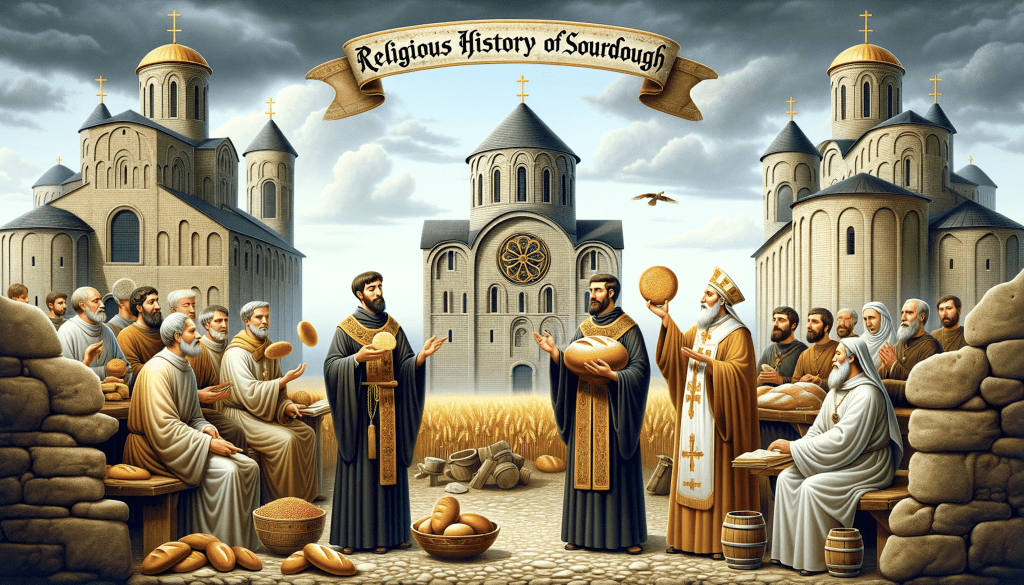Sourdough bread, with its rich history and complex flavors, has transcended time, cultures, and even religious beliefs. In this article, we delve into an intriguing chapter of history where sourdough found itself at the heart of a religious dispute that highlights its significance not just as a food item but as a symbol of life and spirituality. Join us as we explore the fascinating intersection of religion and sourdough, and discover why this ancient bread continues to captivate our senses and our souls.
A Divine Dispute: The Azyme Controversy of 1054
In the 11th century, a heated debate erupted between the Eastern Orthodox and Western Catholic churches, centered around the type of bread used in the Eucharist—a key Christian sacrament. Constantinople insisted on the use of sourdough, equating its leavened nature with life and resurrection. Rome, on the other hand, favoured an unleavened wafer, arguing for its purity and authenticity. This disagreement, known as the “azyme controversy,” was more than a mere culinary preference; it was a theological battle with implications for church authority and the nature of Christ’s sacrifice.
The Symbolism of Sourdough: Life, Warmth, and Sweetness
For the Byzantines, sourdough was not just bread; it was a representation of Christ’s flesh, alive and nourishing. The leavening process, which imparts the bread with its characteristic sourness and texture, was seen as a metaphor for divine intervention and the spread of spiritual goodness. The Eastern church’s revulsion toward the unleavened wafer stemmed from its perceived lack of life and flavor, which they believed failed to capture the essence of Jesus Christ’s sacrifice.
The Latin Defense: Purity and Empirical Reasoning
The Western church, however, viewed the fermentation process with suspicion, associating it with decay and impurity. They argued that the unleavened wafer, free from the corruption of leaven, was a more fitting symbol of Christ’s pure and unblemished nature. This stance reflected a more empirical approach, focusing on the observable effects of fermentation and its potential for spoilage.
Fermentation as a Metaphor for Heavenly Transformation
Despite their differences, both sides of the controversy unknowingly touched upon truths that would later be confirmed by science. The debate highlighted early intuitions about the nature of fermentation, distinguishing it from decay and recognizing its transformative potential. The Eastern church’s analogy of sourdough to the kingdom of heaven, where divine love spreads and enriches, mirrors modern understandings of how yeast and bacteria interact to create the unique flavors and textures of sourdough.
Sourdough: A Symbol of Unity and Timelessness
The azyme controversy of 1054 may have contributed to the schism between East and West, but it also serves as a testament to the enduring significance of sourdough in human culture. Today, as we savour the complexity of sourdough bread, we are reminded of its ancient roots and its ability to inspire passion and debate. Sourdough is more than just a staple food; it is a symbol of life, transformation, and the interconnectedness of all things.
In closing, the story of sourdough and its role in religious history is a reminder that this humble bread is both a science and an art. It transcends cultures, beliefs, and time, uniting us in our shared human experience. Sourdough is not just a part of our diet; it is woven into the very fabric of our being, a testament to the ancient wisdom that continues to nourish our bodies and our souls.





















